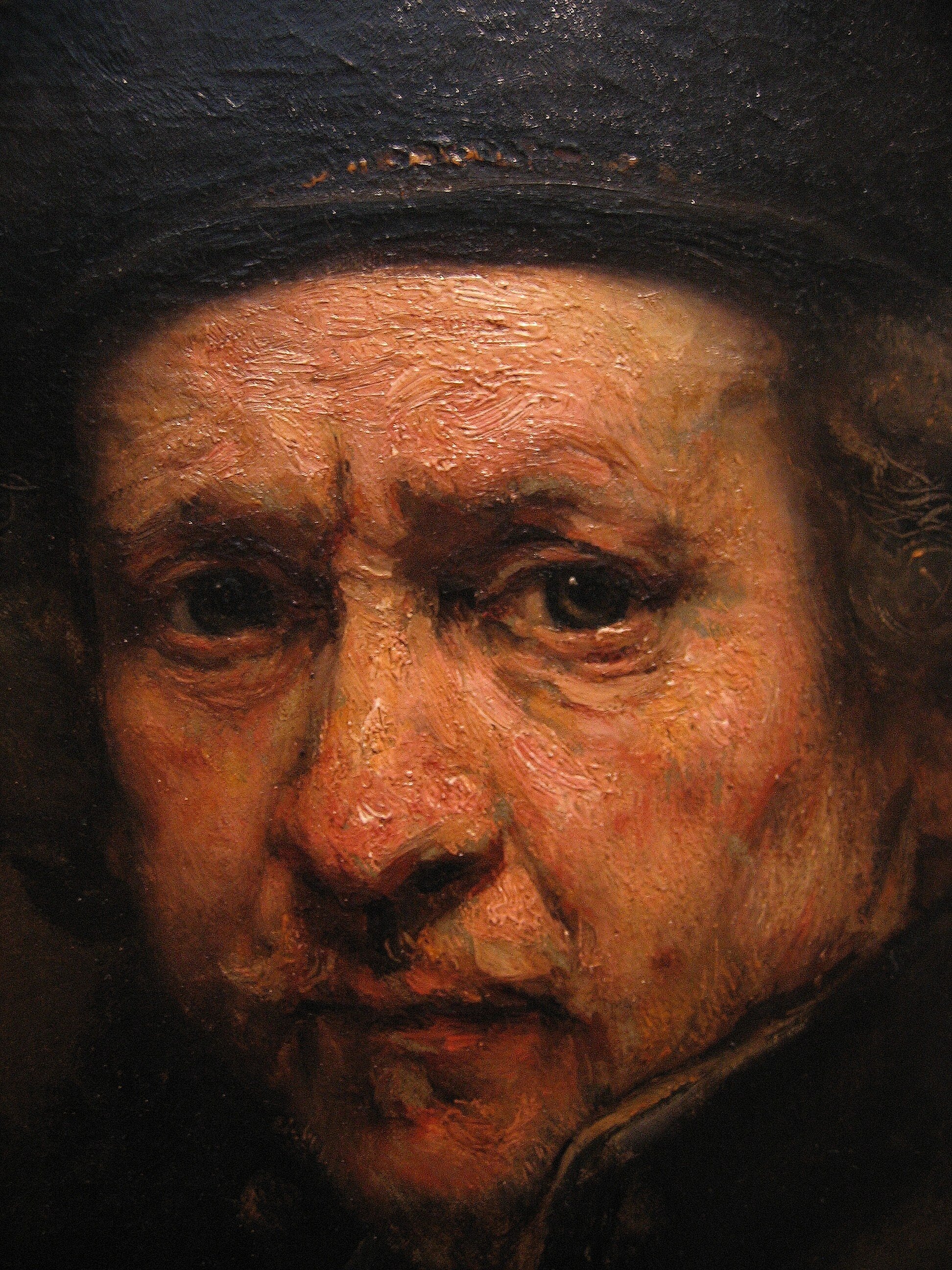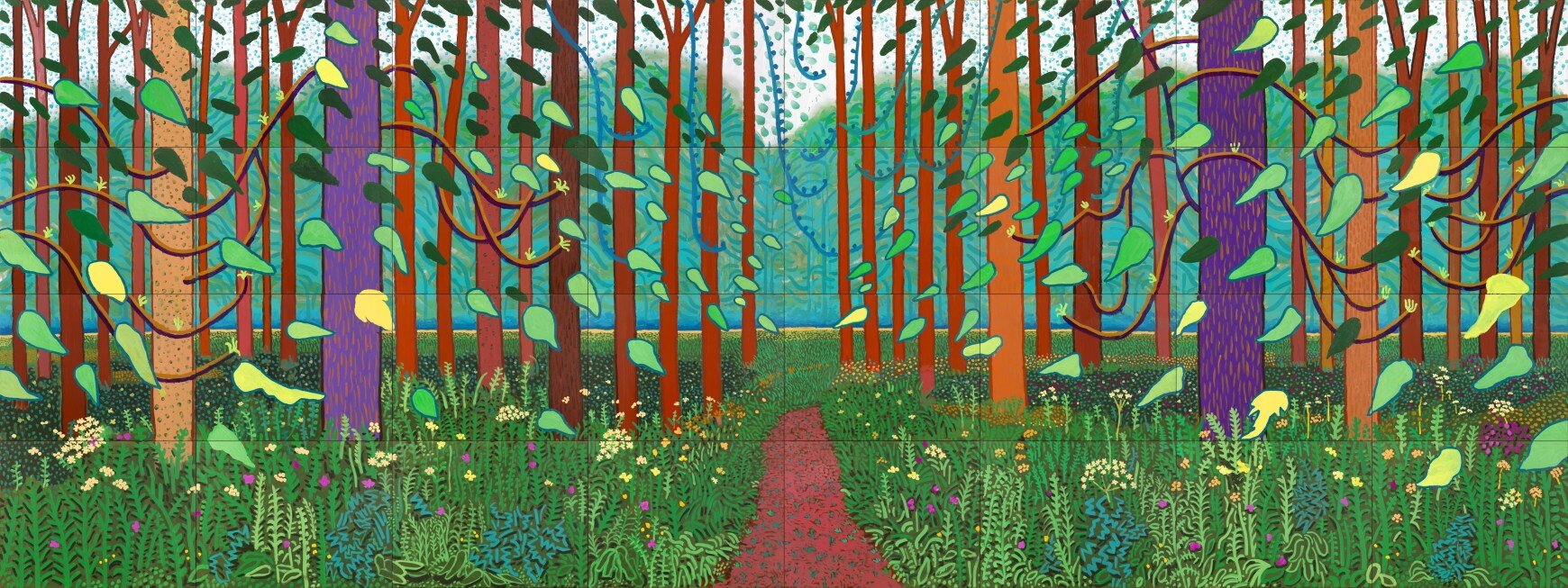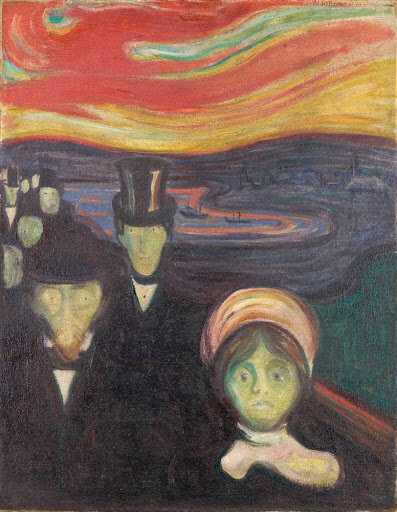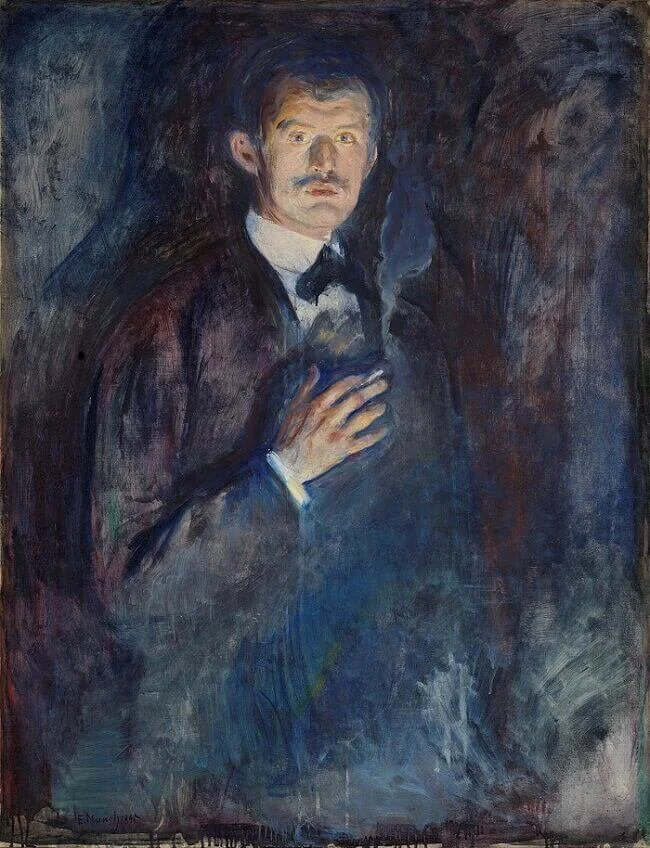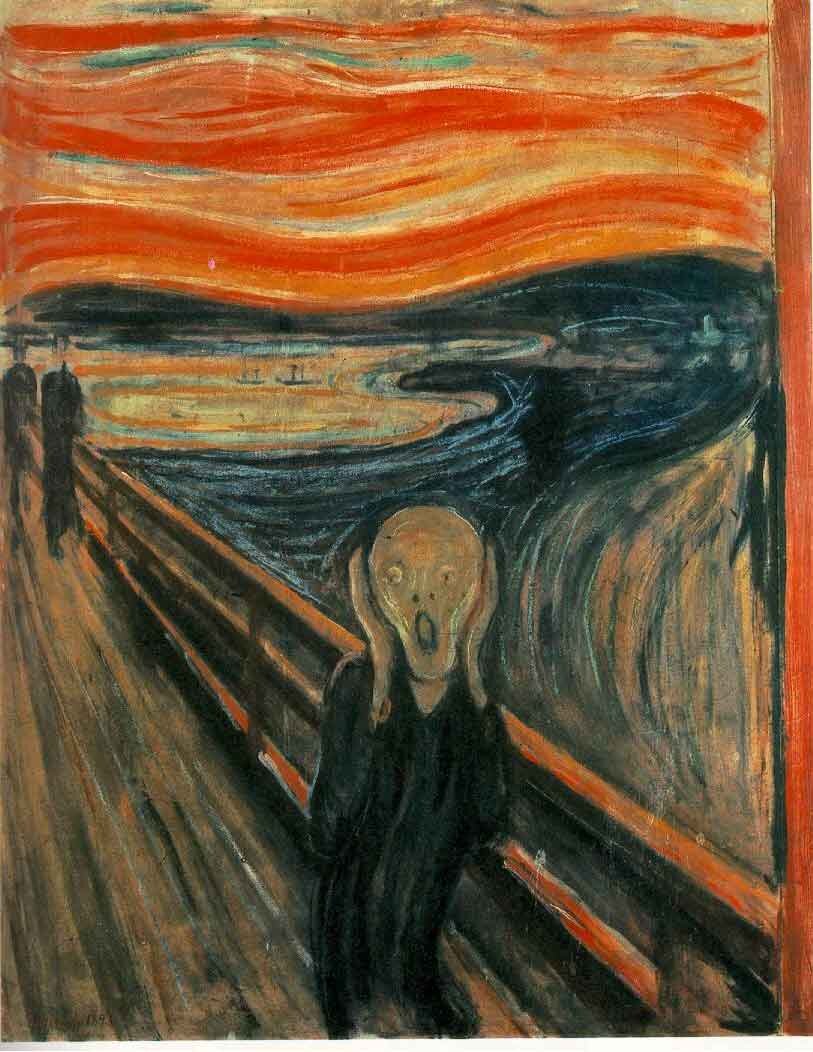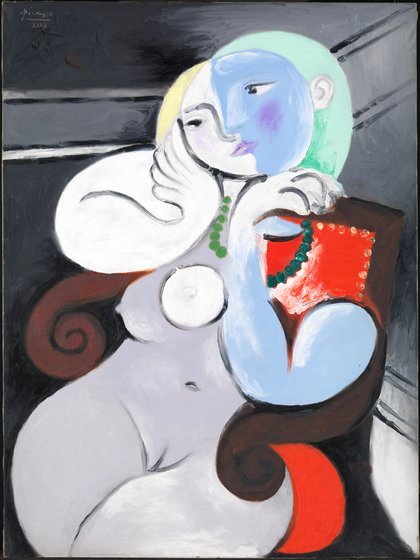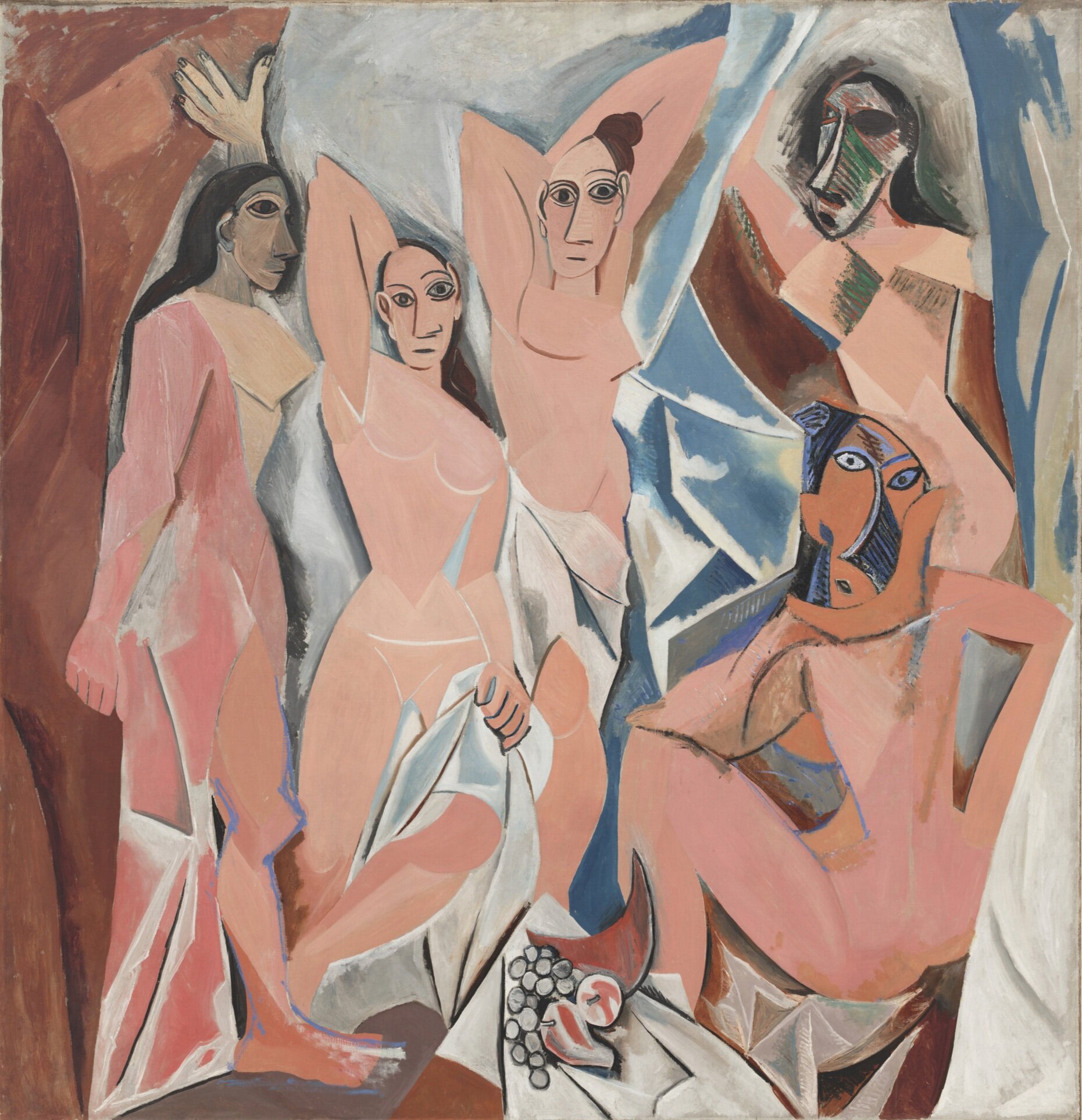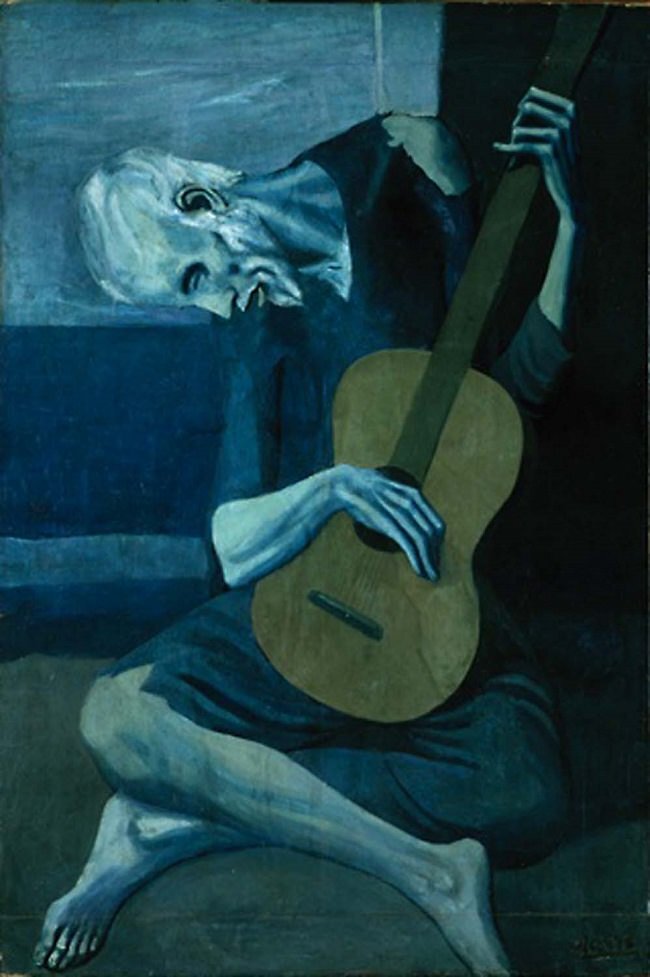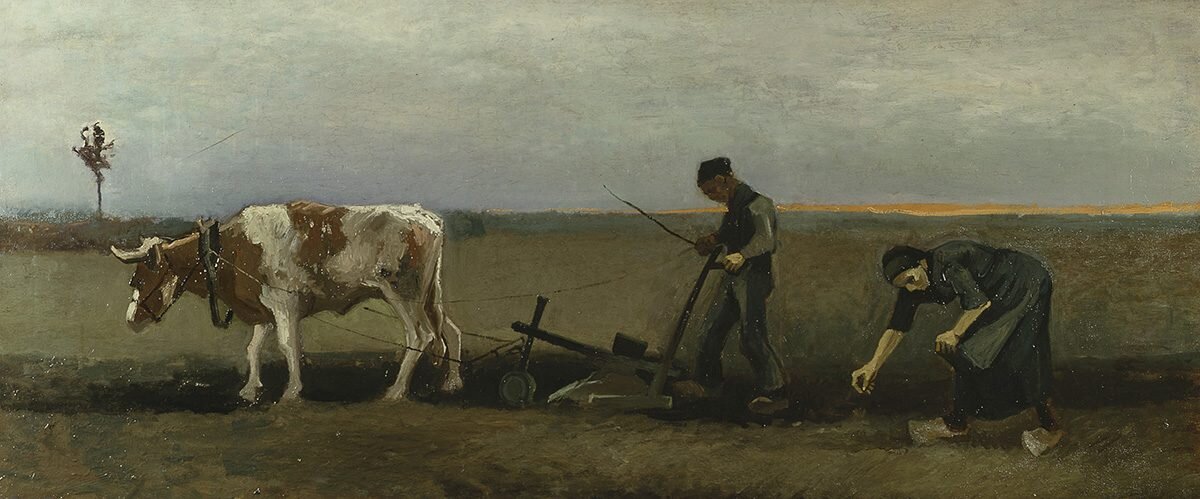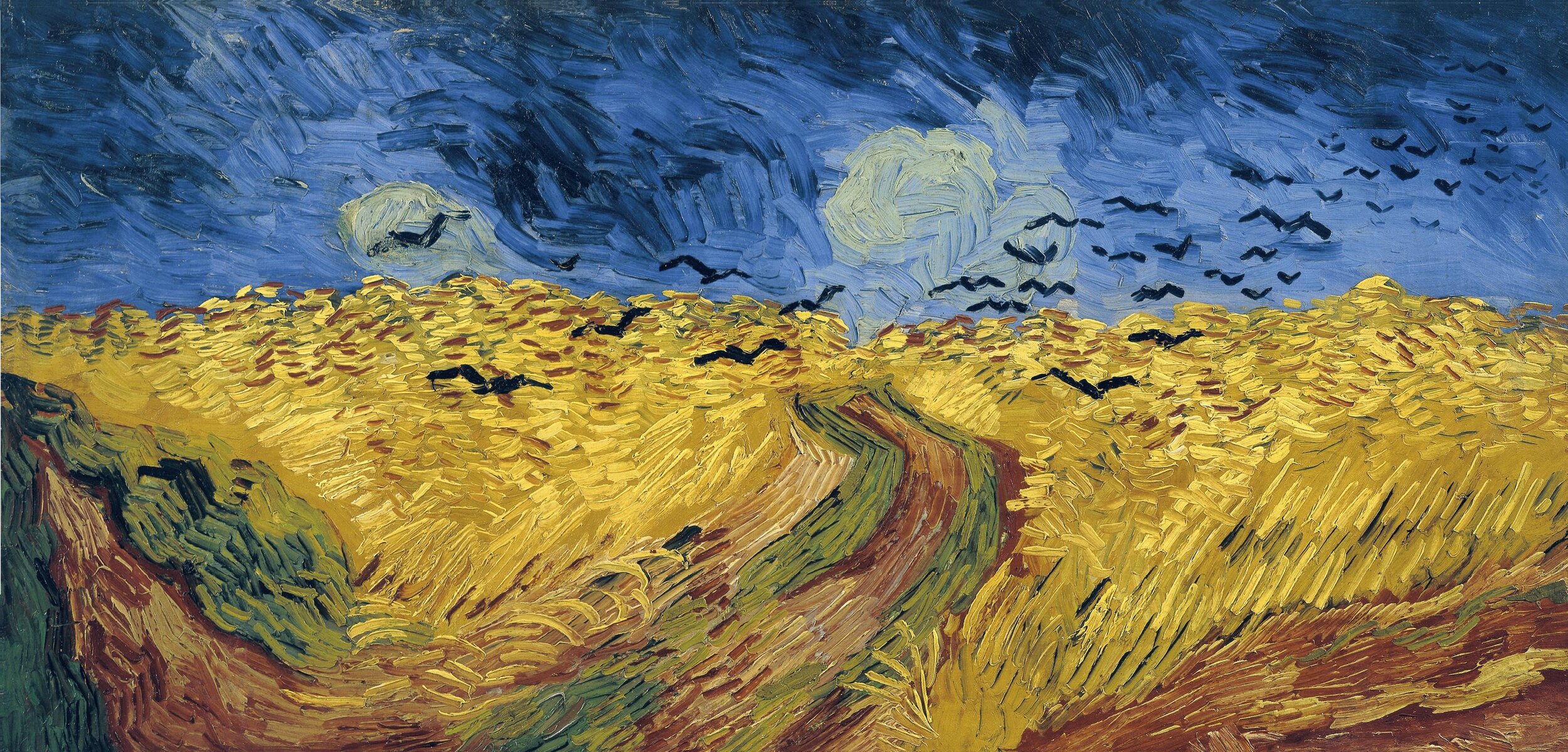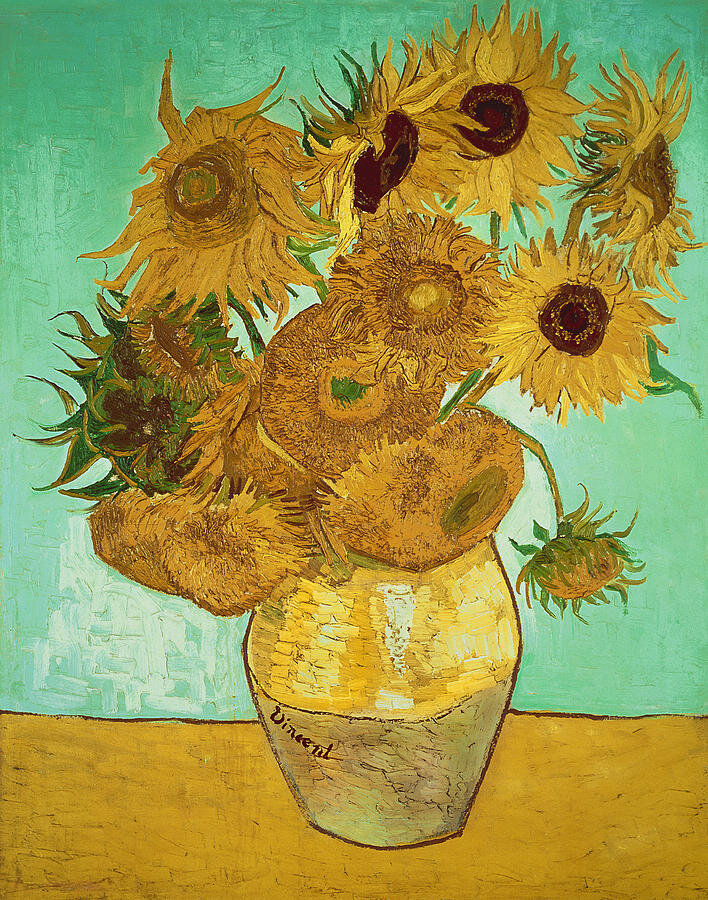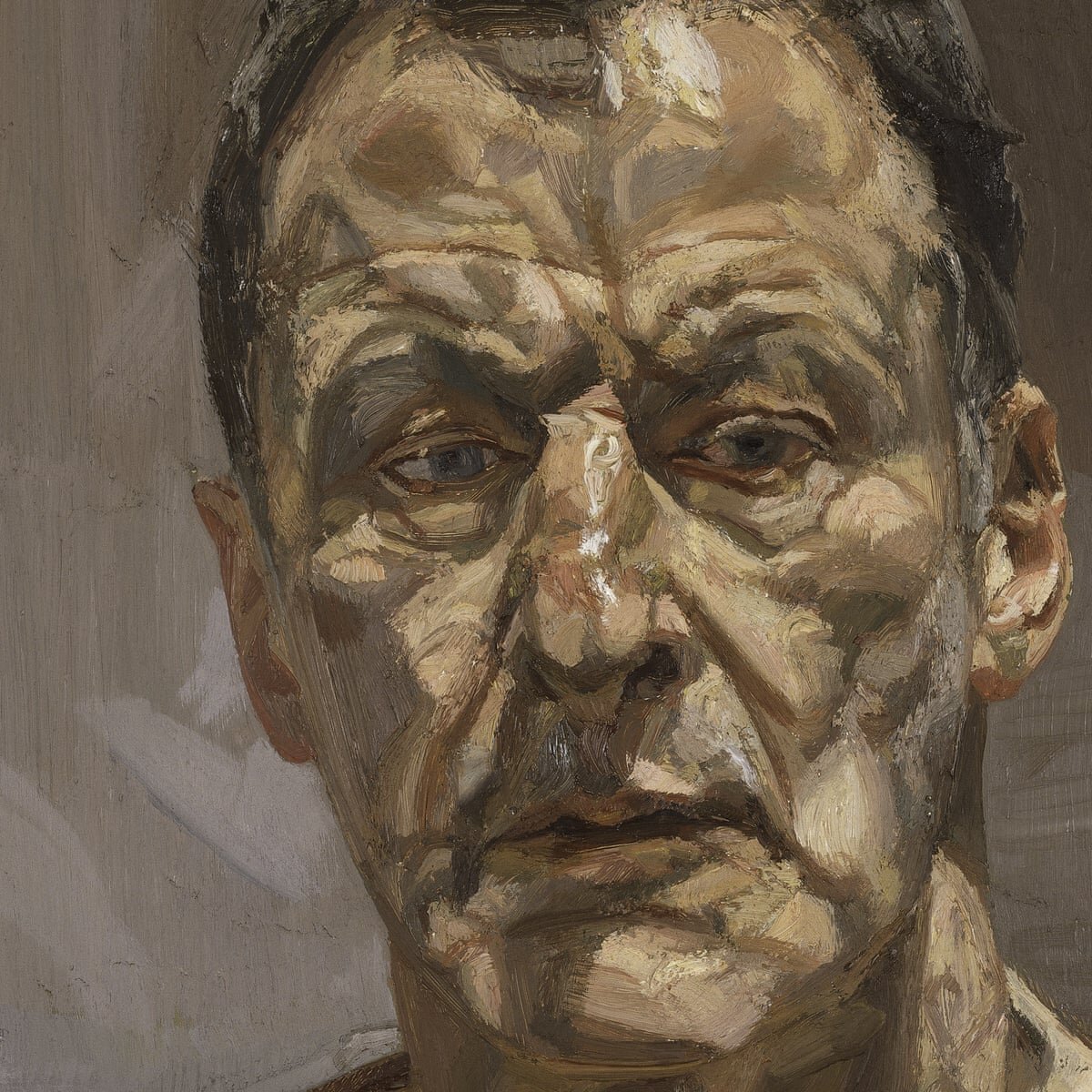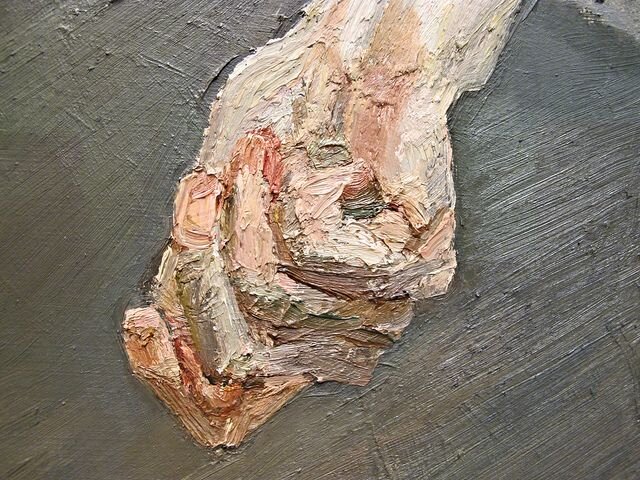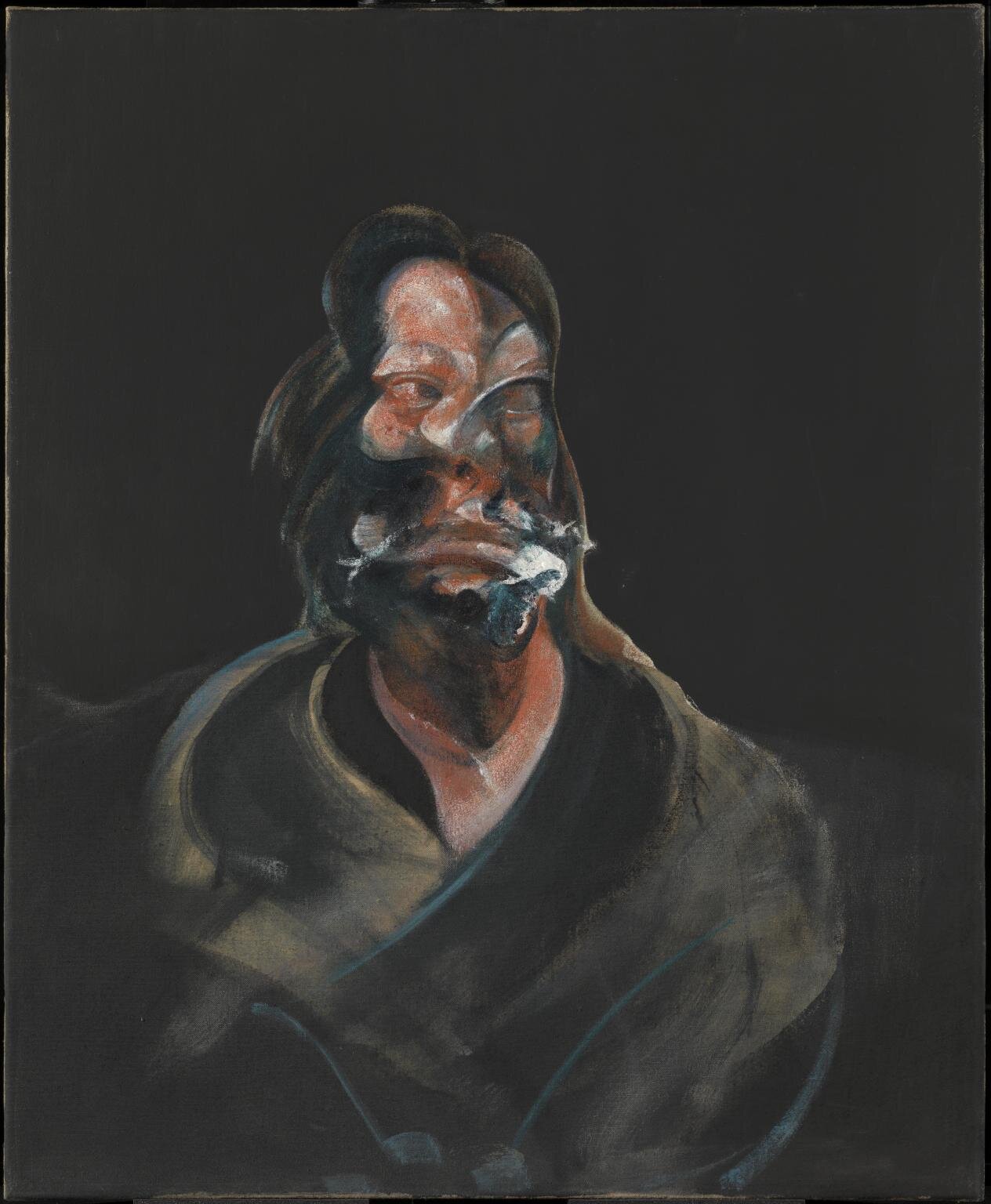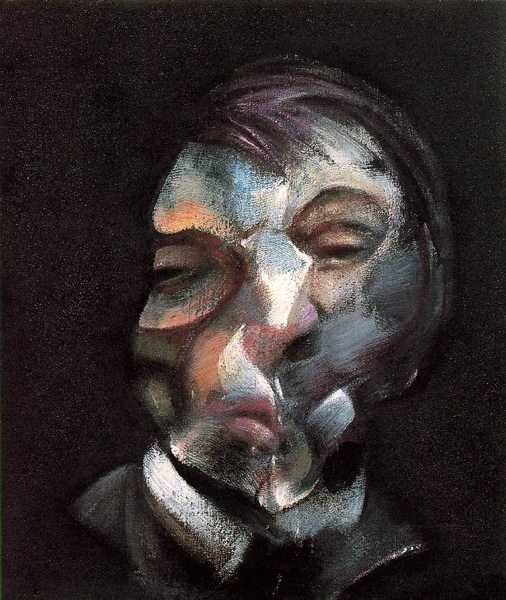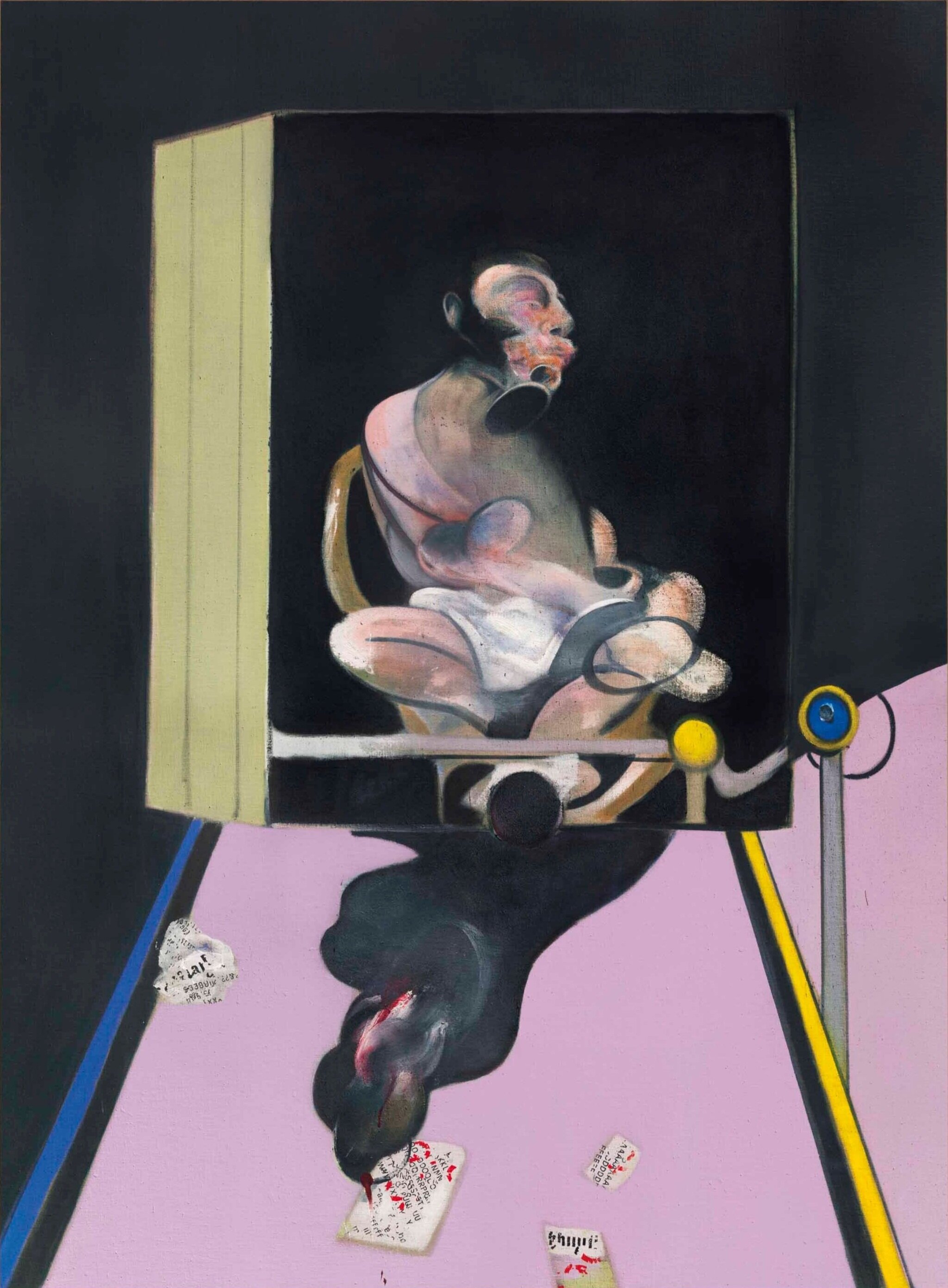Art Techniques - Why Choose Oil Paint?
The Master of All Tools
Whenever I’m asked, What paints should I buy, my resounding answer is always Oil Paints. I know what you’re thinking, ooh no, not oil paints, they smell horribly and the last time I used them I was in High school.
Well Oil paints have come a very long way since the years of dried up, hard to open tubes and smelly turpentine solutions for cleaning your brushes. Nowadays, we have the pleasure of using oil paints that are free from toxins and completely odourless.
If you want to create deep dense brushstrokes that stay frozen in time, Oil Paint is the one for you. If you want to create slick, glossy texture, that looks wet after years of curing, Oil Paint is the choice. And, if you want that delectable translucency akin to steam lifting from the rim of a cup of tea, again, Oil paint is the one for you.
No matter the technique, Oil Paint beats all other materials again and again.
A Brief History
The old Masters always used Oil Paints. From inception, Colour in Art came from the simple solution of mixing a dried, ground pigment with an oil-like base, till it combined to a runny “yogurt like” mixture. This messy mixture was then dripped, brushed and smeared onto a surface with the hopes of the vibrant pigments adhering to the surface.
Oil Paint is an emulsion of finely milled coloured powder and linseed oil. The coloured power remains suspended in the clear linseed oil, allowing light to penetrate each painted layer while reflecting light off the suspended coloured particles. This gives oil paintings that beautiful translucent shine and depth that we all have come to know and love.
Traditionally, Paintings done with Oil, are comprised of 8-15 thin layers of application. This allowed the Painter to create a beguiling depth of field. Skin tones could be translucent and realistic; casting light could be atmospheric and emotive.
Tiziano Vecelli aka Titian(English). Danae. Cc 1544
Rembrandt van Rijn. Self-Portrait. Cc. 1659
The Multi-faceted All Rounder
When working with Oils, the Artist becomes a bit of an Alchemist. Oil Paint is traditionally comprised of a coloured pigment and an oil base. How the Painter creates this ratio is completely personal to them and the technique they want to achieve.
Having this level of control with your paint allows the Artist to really create a painting mixture that is completely specific to their needs. Artists love manipulating their materials to gain new and improved ways of expressing their thoughts. Oil paint is top on that list.
We all know that Oil paint takes a long time to dry. This may seem like a nuisance, but in reality, long dry times allows for slow methodical work.
Masters like Rembrant and Titian would work for many years at time on a particular painting; methodically layering their colours to achieve vast realism and beauty.
A Modern Approach
Since the 1950’s, Oil Paint has changed drastically. Any Oil paint in the tube is now an emulsion of non-toxic dried pigment (natural or synthetic) and Linseed Oil or Alkyd Gel. Alkyd Gel is a synthetic, odourless material that mimics the features of a painting oil, and is free from expiration. This ensures the Oil Paint in the tube does not alter in colour, scent or texture over time. Oil Paints in the tube can last for many years, once properly sealed after use.
To thin Oil paint to a consistency of your choosing, Linseed Oil is an ideal option. Linseed Oils is cold pressed to retain transparency. To add gloss, you can use Liquin. Liquin is a material Mix-in to Oil Paint that creates intense glossiness with minimal stickiness. It is a fantastic product that reduces dry time without sacrificing gloss, consistency and working time.
In all my classes, I encourage my students to use a mixture of Linseed Oil and Liquin when paintings. This allows the student to work for 2-5 hrs before the paint begins to dry.
If you still aren’t convinced, here are more amazing reasons why Oil Paint is still the most preferred painting media of all Artist.
David Hockney. The Grand Canyon. Cc 1998
A Secret in the Wind
Want to create wispy clouds in a bright blue sky or simulate steam? To achieve this technique, create an oil mix that is very runny and smooth. Unlike Acrylic or Watercolour Paint, Oil pigments tend to hold their vibrancy regardless of dilution. That is to say, when you add water to your acrylic or watercolour pigments, your mixture becomes paler the more water you add. With Oil Paint, the colour vibrancy will only decrease if an immense amount of Linseed Oil is added.
Artist have the opportunity to create highly pigmented washes for layers, ensuring that colour pay-off is high at every stage. Famous Artist, David Hockney has been creating vibrantly stunning paintings for over 50 years with Oil Paint. He works with thin, smooth layers of striking colours that result in paintings that are graphic, bright and striking. His paintings make you feel joy and the way he treats light is just beautiful.
David Hockney. A Bigger Picture. Cc 2011
Reach out and Touch me
Ever walked passed a painting and all you wanted to do is just touch it? Chances are, it was done with Oil paint. Yes I know, texture can be achieved with Acrylic Paint, but texture created with Oil Paint is just on a whole other level.
In order for Acrylic paint to hold its three dimensional texture, you have to add a series of various mix-ins. These mix-ins tend to dilute your colour, as well as react differently depending on the the materials already present on the surface you are working. This can result in chipping, paleness when dried and an overall lack-lustre effect.
With Oil paint, all you add is Cold Wax. Traditionally, Cold Wax was a softened candle wax that you would mix into your pigment and oil solution. Nowadays, Cold Wax can be a synthetic oil emulsion that does not split, or dilute your pigment when added. If working with your palette knife, this material is a dream. The paint will mould and move to your liking and once in its right place will set and dry. When cured, the colour does not darken or fade; it remains dimensional just the way you intended.
Famous Expressionist Artist, Edvard Munch painted using both thin layers and thick impasto layers. This is a very popular grouping of painting techniques as it allows the Artist to place texture only where desired. Swirling, vermillion skies, expressions of heightened anxiety and depression were embedded in Munch’s paintings just by his use of colour choice and paint texture. His paintings can still be described as atmospheric and foreboding.
The Hand of the Artist
There is something so primal about working with Oil paint. You are in control of every single element of your painting; from the combination of pigment colour, to the fluidity of the paint, to the level of gloss or matte, to the opacity of your layers. It’s the one material that allows the Artist to be in total control of every step in their Art making process.
I enjoy seeing paintings done in Oil paint. They stand as a time capsule of that moment, of the hands and the mind that made the artwork. Oil Paint lets you peer into how the painting was made; about the Artist’s hands and motions, and sometimes even their thoughts. As an Artist, we communicate to the world with our paints and tools. Oil Paint allows the artist to share with their audience a highly personal and unique side to their art making process.
Master painters like Pablo Picasso and Vincent Van Gogh invited the viewer to peak into their Art making practise. Their paintings are renounced as unachievable by any other. Each Artist’s work is highly dependent on the time of day they were painted, the level of stability in the artist’s hands at that moment and the visual material they drew from at that moment.
Looking closely at a Van Gogh painting, you can see the weight he placed on the brush to make each of those strokes. You can experience Picasso’s fast wet large brush swiping the canvas quickly, methodically yet absolutely free-formed all in a single mark. Absolutely enthralling and unmistakably technical.
In both instances, Oil Paint was the ideal media to express their work. With widely varying paint consistencies and different tool techniques, both were still done in Oil paint.
Emotive control and Expressive right
As an Oil Painter, the paint can be used as a method of expressing your emotive desires. This is very evident in paintings done by famous British painter, Lucian Freud. Freud chose to express the personality traits of his subjects with a paint mixture that was very sticky, matte and thick. This choice amplifies his unique style of painting of using his brush to almost carve and mould their bodies out of this thick mess of paint.
The result is so tactile and visceral that the viewer is compelled to move closer in and linger on every crease and stroke.
High Shine to Super Matte
Artists are always looking for more tools to express their emotive concerns in their Artwork. Some of the most notable painters like Francis Bacon chose to use Oil paint and the brushstroke to exaggerate the mental impulses he felt when creating his paintings.
Bacon painted with an oil mixture so dry and matte that the paint is almost scratched onto the surface in a deliberate stroke. Bacon would work on a portrait mostly in one sitting. His brush would move methodically across the canvas, scantly spreading his thick, dry oil emulsion. The result was a portrait created out of wind and sand. Textured but soft, deliberate but free-formed; delicate but harsh.
I hope this blog made you rethink using Oil Paint in your own painting practises. Once you master the versatility of Oil Paint, you will never look back. No matter the painting technique you want to achieve, Oil Paint can do the job.
If you enjoyed this little journey into Art History with me, be sure to subscribe to SRA’s social media platforms to be kept up to date when new Art Techniques are released. This is a fun new style of blogging that I am looking forward to expanding.
As always, Thank you for taking the time out of your day to read and learn something new about Oil paint. All the best on your own creative journey.
Your Instructor,
Saabira Razac


